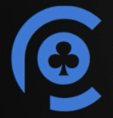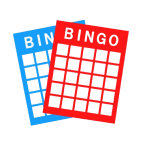Blackjack Strategy: How to Win at Blackjack
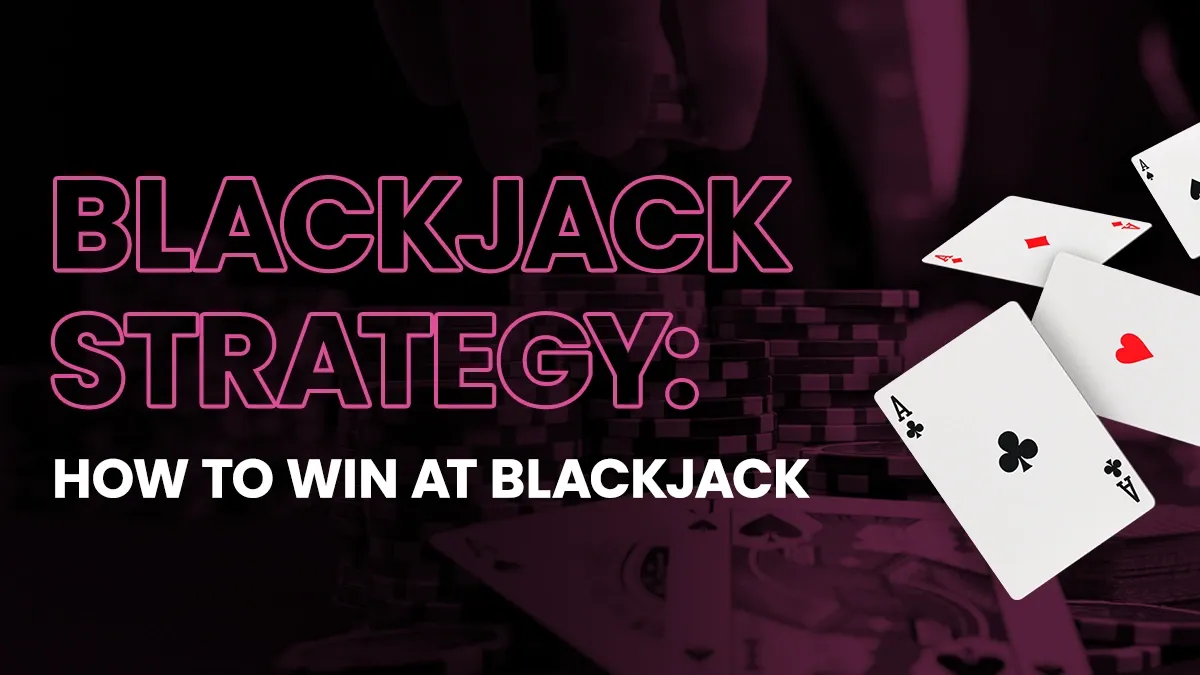
Are you looking to improve your blackjack game by learning blackjack strategy? Presumably, if you're reading this article. This guide will help you make more informed decisions and give you a strategic edge. Below, we'll cover essential blackjack strategies, including when to hit, stand, double down, split pairs, and surrender, which are all essential parts of a solid blackjack strategy. We'll also provide you with a basic blackjack strategy chart, which is probably why you're here.
Key Takeaways
-
Master the basics of blackjack, including understanding hand values and key terms like hard and soft hands, to elevate your strategic gameplay.
-
Utilize basic strategy charts and know when to hit, stand, double down, or surrender to maximize your winning potential against the dealer.
-
Avoid common mistakes such as splitting tens and taking insurance bets; instead, focus on basic strategy, favourable table rules and effective bankroll management.
-
Put your skills and strategy into action at the top Canadian online casinos.
Understanding Blackjack Basics
The primary goal in blackjack is to get as close to 21 as possible without going over and to beat the dealer. Blackjack rules are relatively simple. Each player starts with two cards and can choose to ‘hit’ for more cards or ‘stand’ to keep their existing hand. If a player busts by going over 21, they lose automatically, and the dealer wins, regardless of their hand. The dealer reveals their hidden hard after all the players have acted. Typically, the dealer hits if they have 16 or less and stands if they have 17 or higher.
Face cards are worth 10 points in blackjack, and aces can be valued at either 1 or 11. A natural blackjack is the best hand and consists of an ace and a card worth 10. Reaching a total of 21 with 3 or more cards is not considered a blackjack. However, it's the next best thing and very likely a winning hand.
Beyond hitting and standing, options like splitting, doubling down and surrendering also come into play in certain situations. Using basic strategy to inform your decision-making greatly enhances your chances of success. As you become more familiar with the game, you’ll realize that blackjack is not just about luck—it’s also a game of skill and strategy.
Five Main Blackjack Decisions
In its simplest form, players have five primary choices when comparing their hand to the dealer’s “up card:” hit, stand, double down, split, and surrender.
-
Hit: Requesting another card from the deck to potentially improve your hand.
-
Stand: Opting not to take another card, thereby maintaining your current hand.
-
Double Down: Doubling your initial bet in favourable situations and receiving just one more card.
-
Split: Dividing a pair into two separate hands for a chance at two wins (while doubling your initial bet).
-
Surrender: Forfeiting your hand when it seems unfavourable (only available in select blackjack games).
Knowing when to hit, stand, double down, split, or surrender is crucial. Basic strategy explains when to choose each option in any given situation.
Hard and Soft Hands
Understanding the difference between hard and soft hands is crucial in blackjack strategy.
-
Hard Hand: Either lacks an ace or counts the ace as 1, limiting flexibility and increasing the risk of busting when hitting.
-
Soft Hand: Includes an ace valued as 11, allowing for more flexible plays without the immediate risk of busting.
Hard totals and soft totals are important to consider when deciding whether to hit or stand.
Blackjack Basic Strategy
It's important to learn basic strategy if you want to have success playing blackjack. The player’s hand and the dealer’s showing card always determine the optimal move in blackjack. Basic strategy originates from computer simulations that have meticulously analyzed hundreds of millions of blackjack hands.
Not adhering to the decisions outlined in basic strategy decreases a player’s chances of winning. Let's look at each decision in more detail and review the best course of action in each given situation.
Basic Strategy Order of Operation
The decisions that you'll make in blackjack come in a logical order based on how the game progresses. After a hand is dealt, your decision-making process is as follows:
-
Should I surrender? (if the table allows)
-
Should I split? (if you have a pair)
-
Should I double down?
-
Should I hit or stand?
Let's walk through each of these decisions in detail.
When to Surrender (If Allowed)
The first thing you'll ask yourself after the cards are dealt is, should I surrender?
Surrendering involves forfeiting half your bet to conclude the hand early. It is a strategic move when you have a weak hand against a dealer showing a strong card. Surrendering can lower the house edge significantly when done at the right time.
So, when is the right time to surrender?
-
Surrender a hard 16 if the dealer has a 9, 10, or Ace.
-
However, do not surrender a pair of 8s. Always split 8s. More on that later.
-
-
Surrender a hard 15 if the dealer has a 10.
|
Hand Type |
Player's Total |
Dealer's Upcard |
Surrender? |
|---|---|---|---|
|
Hard 16 (no Ace, no 88) |
16 |
9, 10, or Ace |
Surrender |
|
Hard 15 (no Ace) |
15 |
10 |
Surrender |
Please note that not all blackjack tables will provide the option to surrender. If they don't, then you can move on to the next step.
When to Split Pairs
Okay, so you didn't surrender (or you weren't allowed to); what's next?
The next question you should ask yourself is, do I have a pair that I should consider splitting?
Obviously, if you don't have a pair, you can move on to the next decision. However, if you do have a pair, considerations must be made.
Splitting occurs when two cards of the same value are divided into two separate hands, requiring you to stake an additional wager equal to your initial bet. You are now playing two separate hands.
Splitting pairs is a powerful strategy in blackjack, but it must be done correctly to maximize its benefit. Here's a breakdown of when you should split each pair:
-
Always split Aces and 8s.
-
Never split 5s and 10s.
-
Split 2s and 3s if the dealer shows 4-7 and 2-3 if the table permits doubling down following a split.
-
If you cannot double down following a split, you should simply hit when the dealer shows 2-3.
-
-
Split 4s if the dealer shows a 5 or 6 and the table permits doubling down following a split.
-
If you cannot double down following a split, you should hit here instead of splitting.
-
-
Split 6s if the dealer shows 3-6 and 1 if the table permits doubling down following a split.
-
If you cannot double down following a split, you should hit here instead of splitting.
-
-
Split 7s if the dealer shows 2-7.
-
Split 9s if the dealer shows 2-6 or 8-9.
|
Pair |
Player's Total |
Dealer's Upcard |
When to Split |
|---|---|---|---|
|
AA |
2/12 |
Any |
Always split Aces. |
|
22 |
4 |
4-7 (2-3)* |
Split on 4-7. *Only split on 2-3 if the table permits doubling down after a split. |
|
33 |
6 |
4-7 (2-3)* |
Split on 4-7. *Only split on 2-3 if the table permits doubling down after a split. |
|
44 |
8 |
(5, 6)* |
*Split only if the table permits doubling down after a split. |
|
55 |
10 |
Any |
Never split. |
|
66 |
12 |
3-6 (2)* |
Split on 3-6. *Only split on 2 if the table permits doubling down after a split. |
|
77 |
14 |
Only 2-7 |
Split. |
|
88 |
16 |
Any |
Always split 8s. |
|
99 |
11 (no ace) |
2-6, 8, 9 |
Split on 2-6, 8 or 9. |
|
1010 |
16-18 (with ace) |
Any |
Never split 10s. |
It's a lot to remember, right? It will take time and practice!
When to Double Down
You didn't surrender or split; next, you should consider if doubling down is appropriate.
Doubling down involves increasing the initial bet and receiving only one additional card.
Remember soft and hard hands? It's important to understand these concepts here.
You should never double down when you have a hard 12 or higher or if the dealer shows an ace (regardless of your hand).
Here are the optimal times to double down:
|
Hand Type |
Player's Total |
Dealer's Upcard |
Recommended Action |
|---|---|---|---|
|
Hard 9 |
9 (no ace) |
3-6 |
Double Down |
|
Hard 10 |
10 (no ace) |
2-9 |
Double Down |
|
Hard 11 |
11 (no ace) |
2-10 |
Double Down |
|
Soft 13-14 |
13-14 (A + 2 or 3) |
5-6 |
Double Down |
|
Soft 15-16 |
15-16 (A + 4 or 5) |
4-6 |
Double Down |
|
Soft 17-18 |
17-18 (A + 6 or 7) |
3-6 |
Double Down |
|
Hard 12+ |
12 or more |
Any |
Never Double Down |
|
Any Hand |
Any |
Ace |
Never Double Down |
When to Hit or Stand
You didn't surrender, split or double down. This is the case in most blackjack hands, so understanding whether to simply hit or stand is crucial.
Here are the circumstances in which you should hit or stand:
|
Hand Type |
Player's Total |
Dealer's Upcard |
Recommended Action |
|---|---|---|---|
|
Hard Hands |
8 or less |
Any |
Hit |
|
17 or more |
Any |
Stand |
|
|
13-16 |
7 or higher |
Hit |
|
|
13-16 |
2-6 |
Stand |
|
|
12 |
2-3 |
Hit |
|
|
Soft Hands |
Soft 17 or less (A + 6 or lower) |
Any |
Hit |
|
Soft 19 or more (A + 8 or more) |
Any |
Stand |
|
|
Soft 18 (A + 7) |
2, 7, 8 |
Stand |
|
|
Soft 18 (A + 7) |
9, 10, Ace |
Hit |
Recall that your decision-making should follow the order of operations presented here. If you're wondering why a particular situation is omitted from this 'When to Hit or Stand' table, it's because the situation called for a surrender, split, or double down, which takes precedence.
Blackjack Charts
Using blackjack charts helps players quickly find the best play against the dealer’s hand. The left column of the basic strategy chart displays the value of the player’s hand, while the top row displays the dealer's card.
Using these charts helps players make informed decisions, reducing the house edge and increasing their chances of winning.
Take a look at our handy blackjack strategy chart. This chart indicates the best move in any given situation.
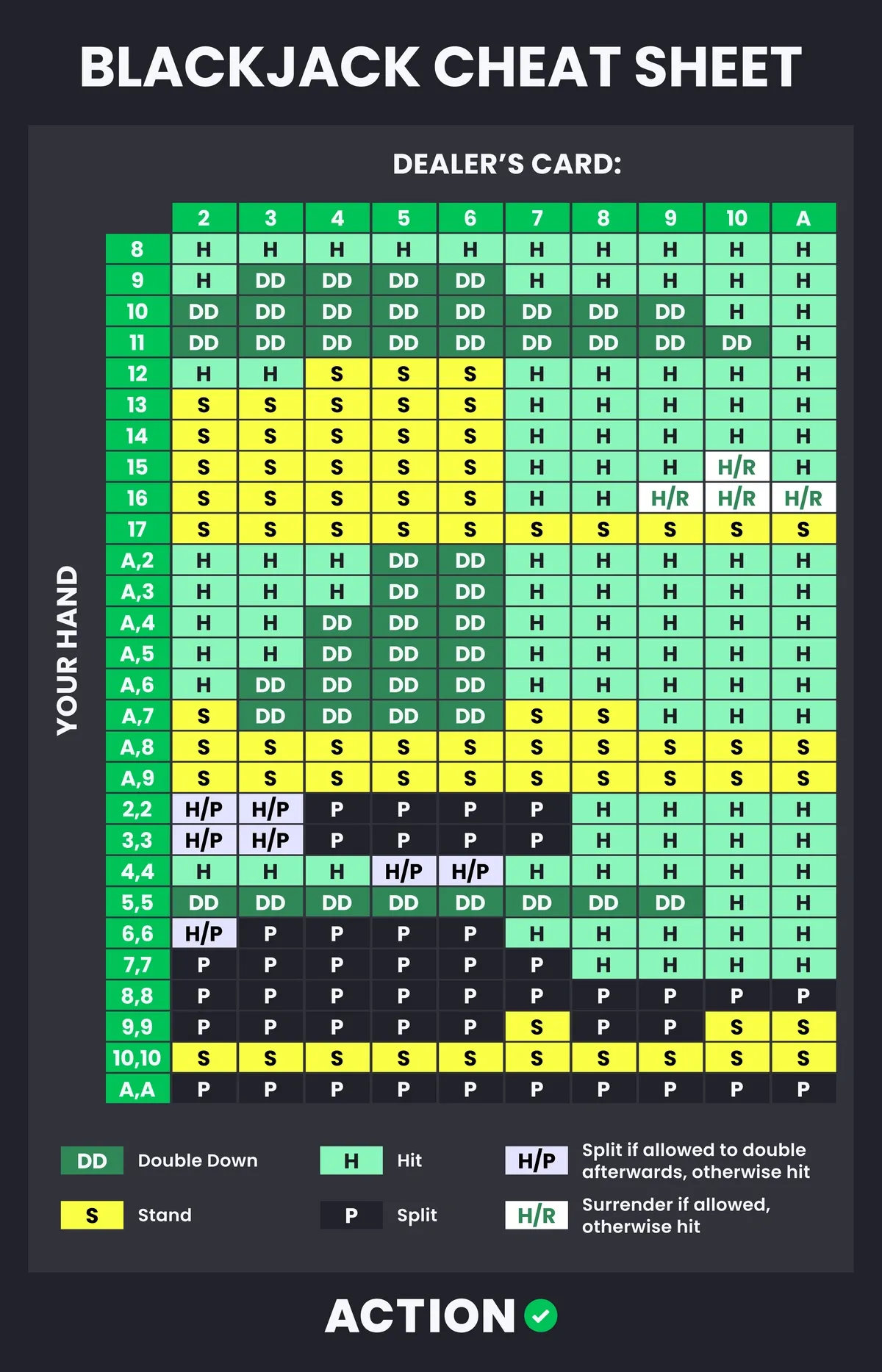
We know it can be a little overwhelming to look at. Hopefully, you've gained some context by reading this far and can use it effectively.
Now all that's left is to memorize it... or keep it handy while playing blackjack online!
Additional Tips
-
If you receive a second pair of aces or eights after splitting, you should always re-split (if permitted).
-
Decline even money offers for your blackjack against a dealer’s ace; it's not worth it.
-
Avoid taking insurance bets; they are a losing bet in the long run.
-
Avoid side bets altogether if your goal is to profit long-term, as they have worse odds than the main blackjack game.
Best Online Casinos to Implement Blackjack Strategy
Implementing a blackjack strategy effectively requires choosing the right online casino platform. Here are some of the best online casinos in Canada to practice your skills and perfect your blackjack strategy.
Casino Days
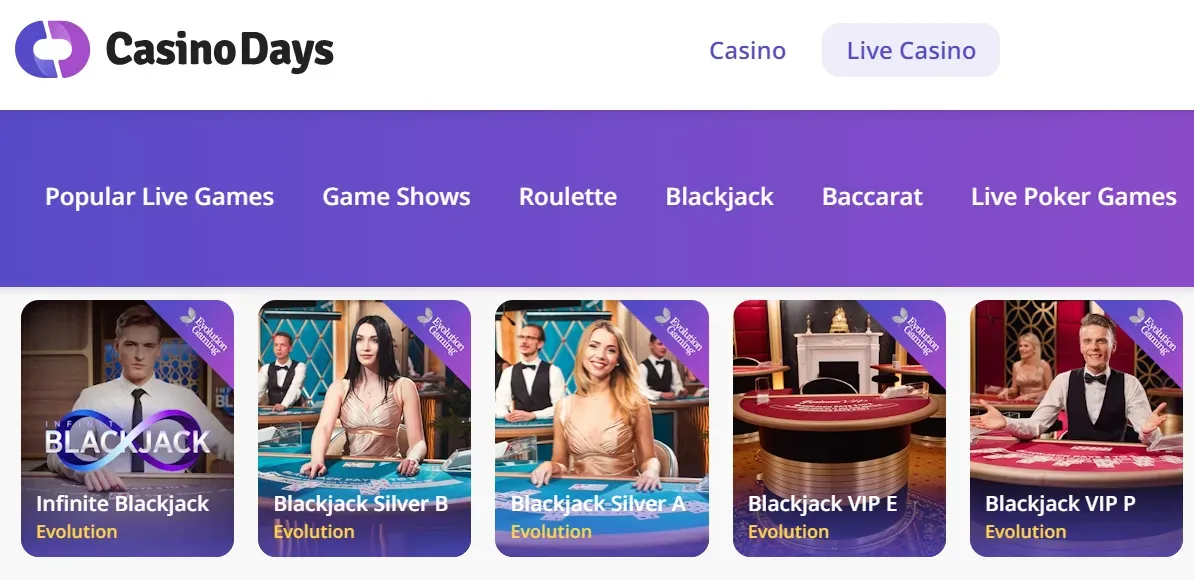
Casino Days is a premier destination for online blackjack enthusiasts in Canada. It offers a variety of games to suit all playing styles, from classic blackjack to live games with professional dealers. The live tables deliver an immersive experience with high-quality streaming and interactive chat. Players can explore a wide array of blackjack variants tailored to both traditional fans and those looking for a modern touch.
Northstar Bets Casino
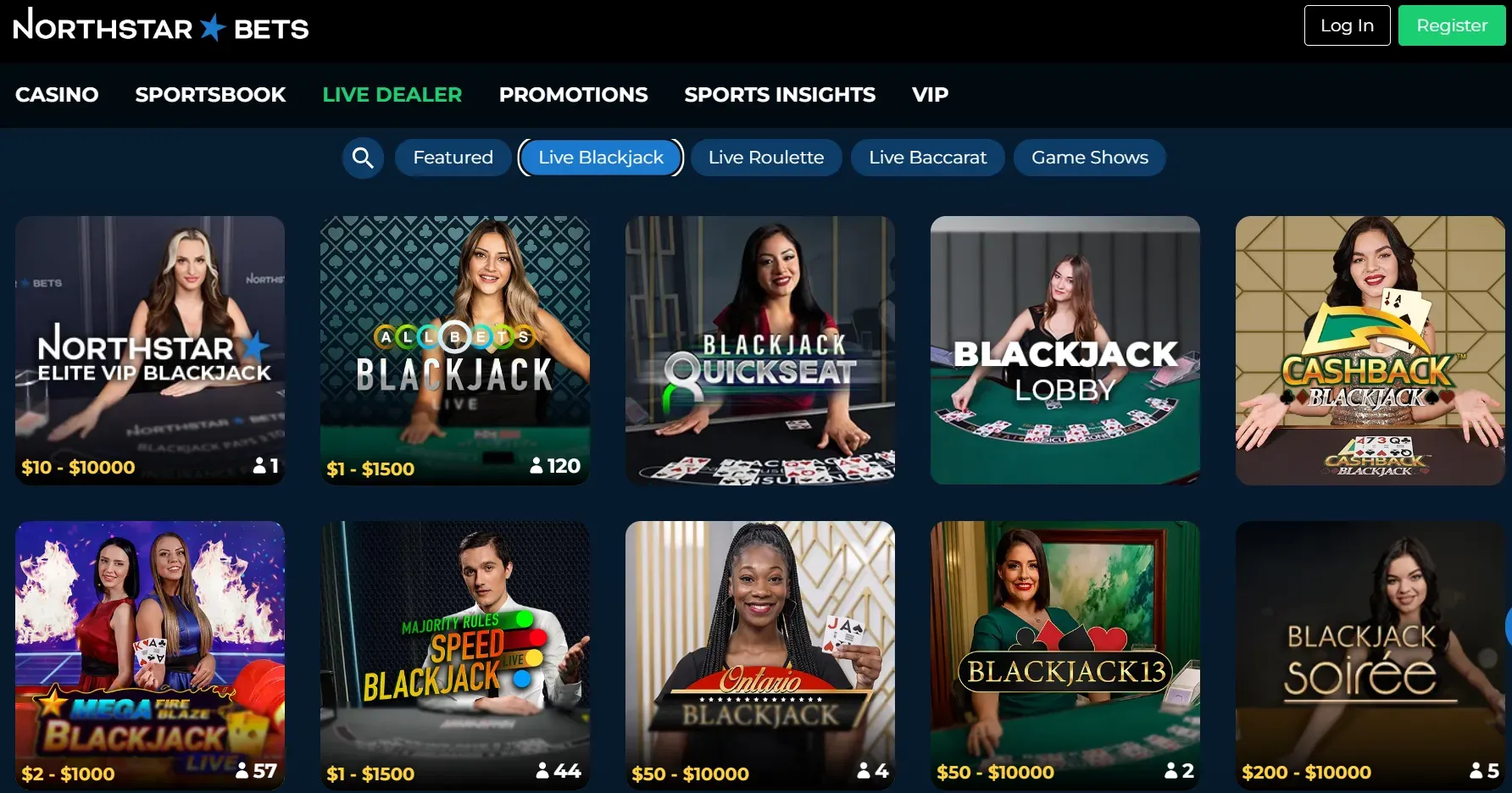
NorthStar Bets Casino is a Canadian online gaming platform that offers players a top-notch blackjack experience. It features various casino games, including slots, table games, and exciting live dealer options. NorthStar Bets Casino presents many exhilarating blackjack variations making it easy for anyone to find a table that interests them.
bet365 Casino
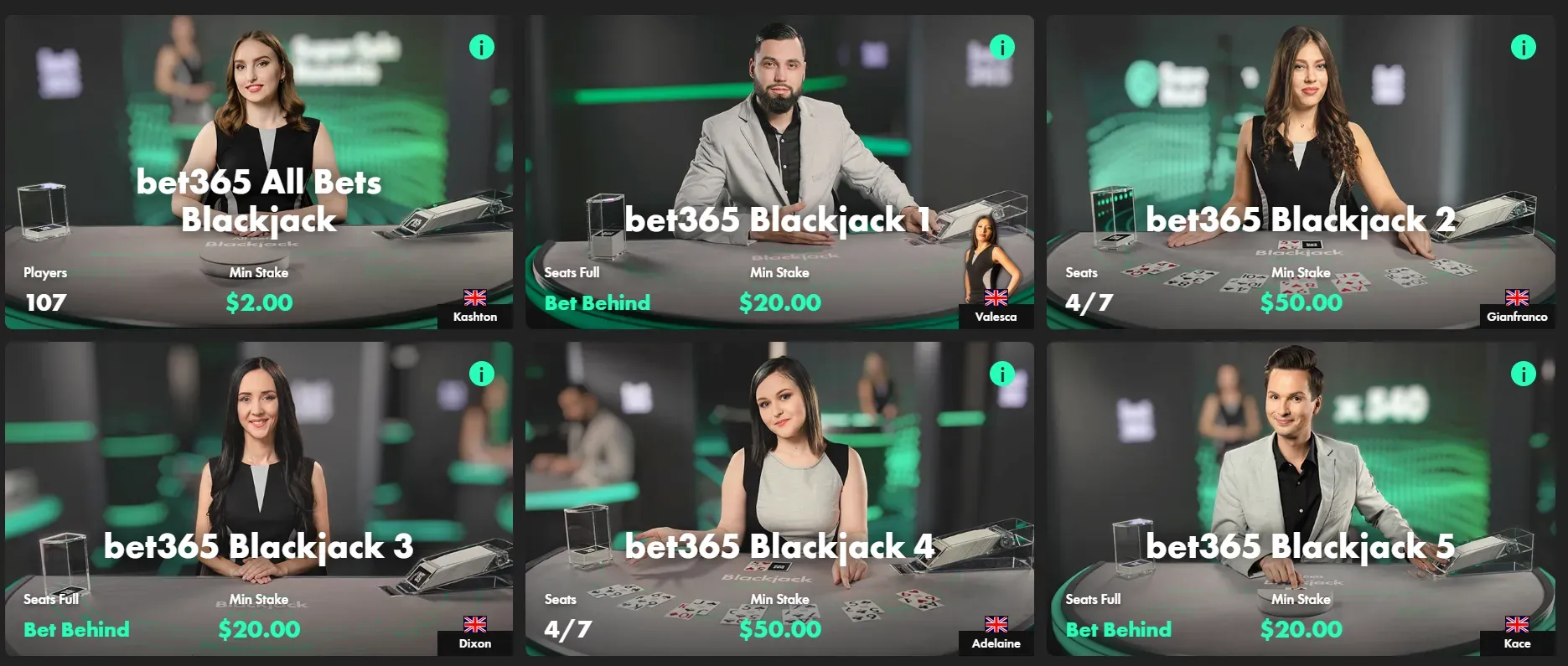
bet365 Casino is renowned as a premier online gaming platform, praised for its extensive collection of top-quality casino games and dedication to player satisfaction. Catering to a worldwide audience, it offers a wide range of gaming options, including slots, table games, and live dealer experiences, all developed by leading industry creators. For blackjack enthusiasts, bet365 Casino is an excellent option, featuring a diverse selection of premium blackjack games.
Casumo Casino

Casumo Casino is recognized as a leading online gaming venue in Canada, boasting over 3,000 slots, a variety of table games, and engaging live casino options for all types of players. Casumo allows you to demo some blackjack games for free, even without an account, offering an excellent chance to practice your blackjack strategy without financial risk. Casumo offers an impressive array of blackjack variations from top software providers.
BET99 Casino
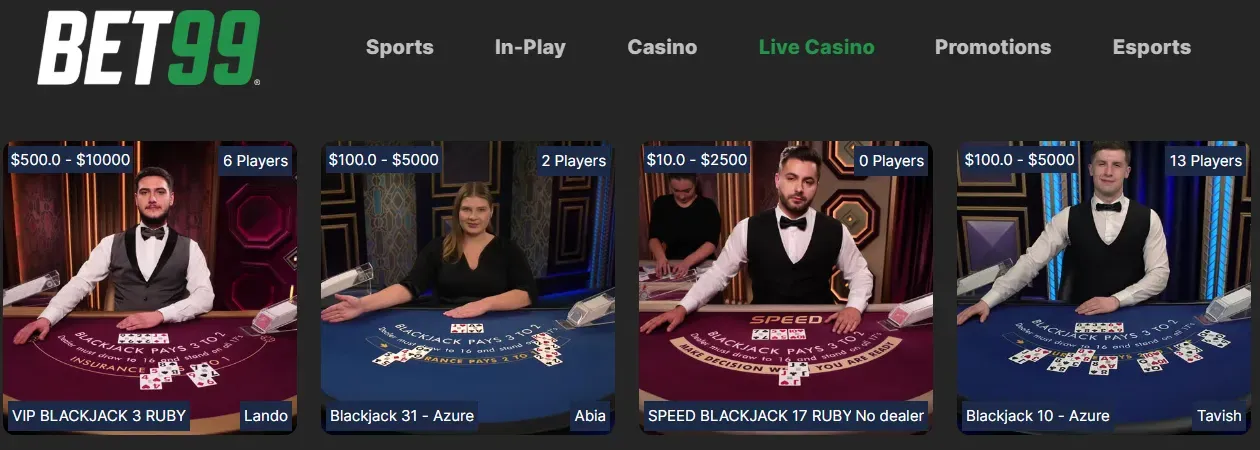
BET99 Casino is a popular online gaming platform that caters to Canadian players with a diverse selection of casino games, including blackjack. BET99 offers both classic and modern variations of blackjack, allowing players to implement their blackjack strategy in various settings. The platform also features live dealer games, providing an immersive and interactive experience akin to playing in a physical casino. With its commitment to security and fair play, BET99 Casino is an excellent choice for blackjack players.
Blackjack Game Variants
You'll find a wide variety of blackjack variants out there, each of which offers slight differences in gameplay and strategy.
-
Atlantic City Blackjack: Utilizes eight decks, allows doubling down on any two cards, and offers late surrender after the dealer checks for blackjack.
-
Blackjack Switch: Players start with two hands and can swap top cards; natural blackjack pays 1:1, and the dealer’s hard 22 results in a push.
-
European Blackjack: Uses two decks, offers a lower house edge, and allows for doubling after a split.
-
Free Bet Blackjack: Players can double down and split pairs for free; the dealer's 22 results in a push.
-
Progressive Blackjack: Includes a side bet contributing to a progressive jackpot for specific high-value hands.
-
Single Deck Blackjack: Uses a single deck, offering a lower house edge compared to multiple deck versions.
-
Spanish 21: Played with a 48-card deck (no '10' cards), allows doubling down on any number of cards, and often features bonus payouts.
-
Super Fun 21: Allows doubling down after splitting, offers a 2:1 payout for a 5-card 21, players win ties against the dealer, and can surrender anytime. However, a natural blackjack only pays 1:1.
-
Blackjack Surrender: Players can surrender and reclaim half their bet, an option not always available at other tables.
-
Vegas Strip Blackjack: Played with four decks, allows doubling down on any two cards, splitting up to four times, and the dealer stands on all 17s.
Blackjack Side Bets
Side bets in blackjack are additional wagers placed on outcomes beyond the primary win/loss result, often featuring higher payouts than standard bets. Popular side bets include:
-
Insurance: Offered when the dealer's upcard is an Ace, this bet allows players to wager on the dealer having a blackjack. It typically pays 2:1.
-
Perfect Pairs: This bet wins if the player's first two cards form a pair. There are typically three types of pairs with different payouts: unsuited, suited and identical.
-
21+3: This bet combines the player's first two cards with the dealer's upcard to form a three-card poker hand. Winning hands include flush, straight, three-of-a-kind, straight flush, and suited three-of-a-kind.
-
Lucky Ladies: This bet wins if the player's first two cards total 20, with higher payouts for specific combinations, such as two Queens of Hearts.
-
Buster Blackjack: This bet wins if the dealer busts, with higher payouts for more cards in the dealer's busted hand.
-
Hot 3: This bet is based on the player's first two cards and the dealer's upcard. It pays out for combinations like a total of 19, 20, or 21 or a suited 21.
There are many other side bets out there. While these bets may be fun to partake in, it's important to remember that they all come with a higher house edge than the main blackjack game. Sticking to the main game and using basic strategy is the way to go.
Blackjack Betting Strategies
In blackjack, players often use various betting strategies to manage their bankroll. Here are some common betting strategies:
-
Flat Betting: This straightforward strategy involves wagering the same amount on each hand, regardless of previous outcomes. It aids in managing your bankroll and minimizes the risk of substantial losses.
-
Martingale System: In this approach, players double their bet following each loss, aiming to recoup all prior losses with a single win. Although it theoretically works, it demands a substantial bankroll and can swiftly hit table limits.
-
Paroli System (Reverse Martingale): Contrary to the Martingale, this technique involves doubling the bet after each win to take advantage of winning streaks. Players revert to the original bet after a loss.
-
D'Alembert System: This method increases the bet by one unit after a loss and decreases it by one unit after a win, seeking to balance wins and losses over time.
-
Fibonacci System: Based on the Fibonacci sequence, this strategy involves placing bets that follow the sequence (1, 1, 2, 3, 5, 8, etc.). After a loss, the player progresses to the next number in the sequence, and after a win, they move back two numbers.
-
1-3-2-6 System: A positive progression system in which the player raises their bet according to the sequence after each win. After four consecutive wins, the player returns to the initial bet.
-
Card Counting: Though not a betting strategy in the traditional sense, card counting involves tracking the ratio of high to low cards left in the deck to adjust bets and playing decisions accordingly. It's a more advanced tactic and is often discouraged or prohibited in casinos.
Common Mistakes to Avoid
There are some common mistakes that players unknowingly make that actually hurt their chances of long-term success.
-
Splitting Tens (or Faces): Splitting tens is a common mistake among players tempted by the possibility of creating two separate winning hands. A hand totalling 20 is one of the strongest in blackjack, and splitting it leads to a strategic disadvantage.
-
Taking Insurance Bets: While they might seem like a safety net when the dealer shows an ace, the odds are not in the player's favour. Experienced players recommend sticking to basic strategy and avoiding insurance bets altogether, as they don't contribute to long-term success in blackjack.
-
Always Standing on 16: Many players opt to stand on 16 for fear of busting, even when the dealer shows a strong card. However, a 16 does not beat any dealer's hand other than a bust. Players should hit 16 when a dealer shows 7 or higher and surrender, if possible when the dealer shows 9, 10, or A.
Summary
Mastering blackjack involves understanding the basics of gameplay and using basic strategy to inform decision-making. By using basic strategy, managing your bankroll effectively, and playing at a reputable online casino, you can maximize your chances and enjoy the game to its fullest.
Remember, blackjack is not just about luck—it’s also a game of skill and strategy. Take some time to practice and memorize blackjack strategy before you risk your hard-earned cash. Remember, blackjack charts are your friends. Good luck out there!
Read More - Top Canadian Online Casino Reviews






















